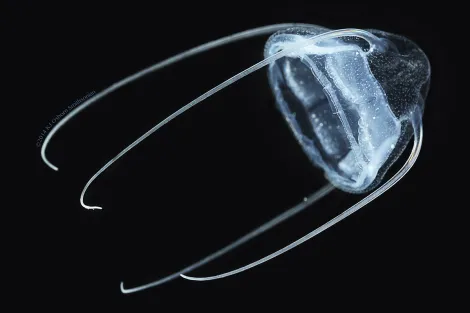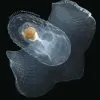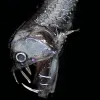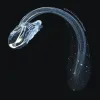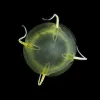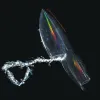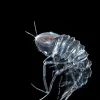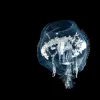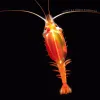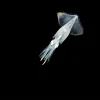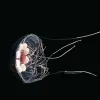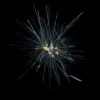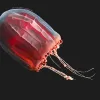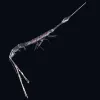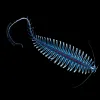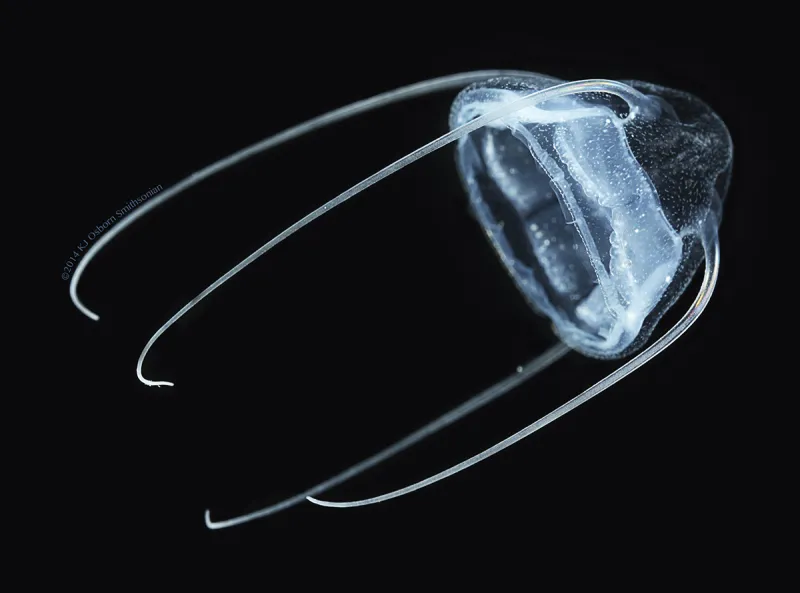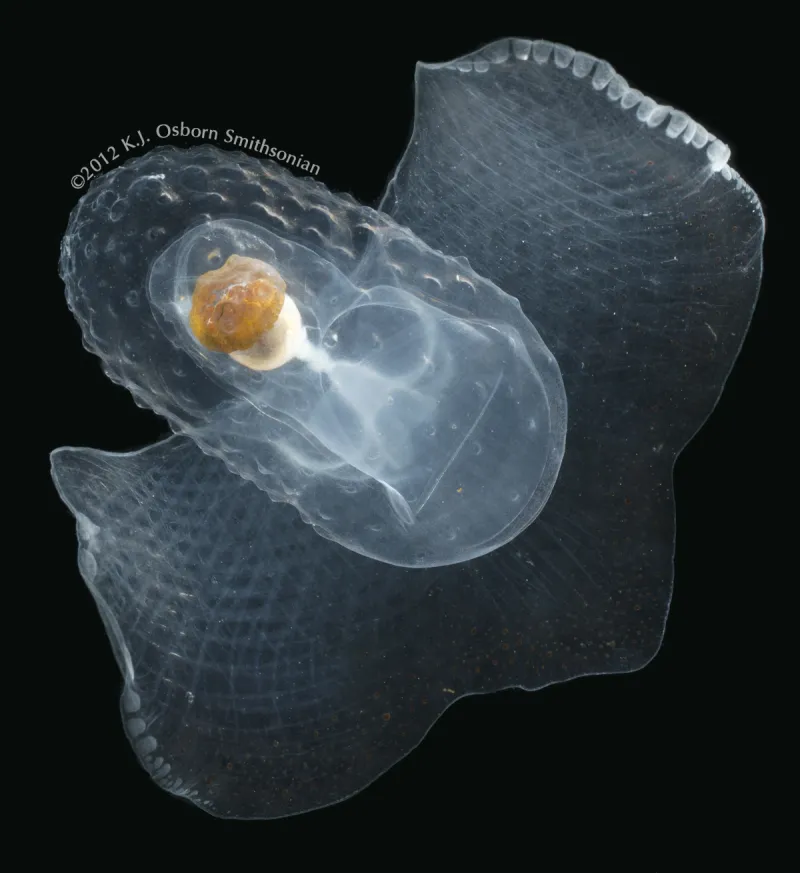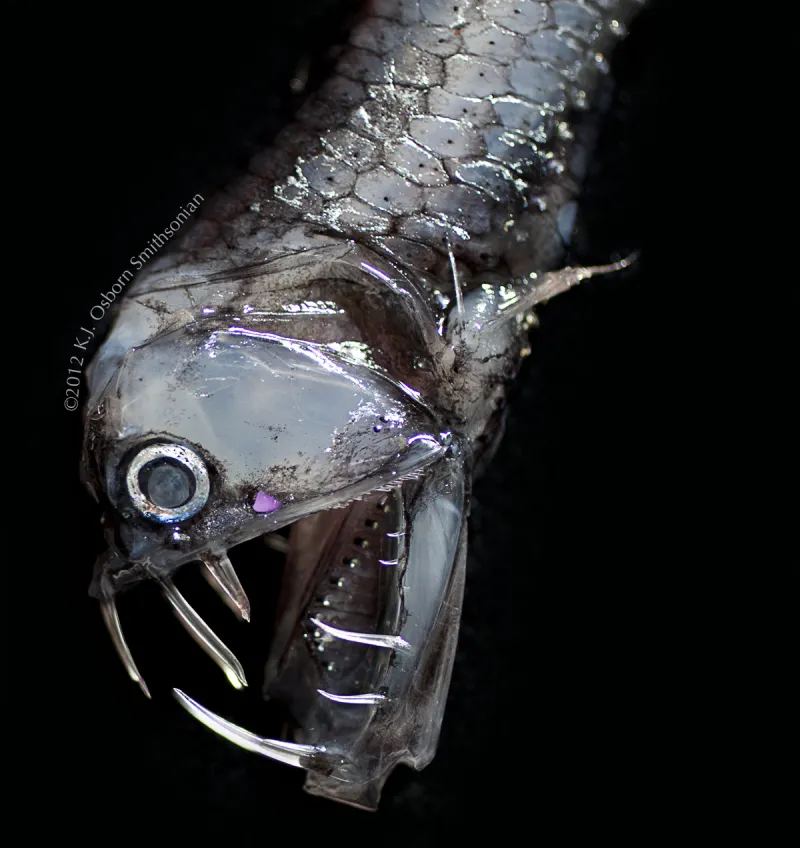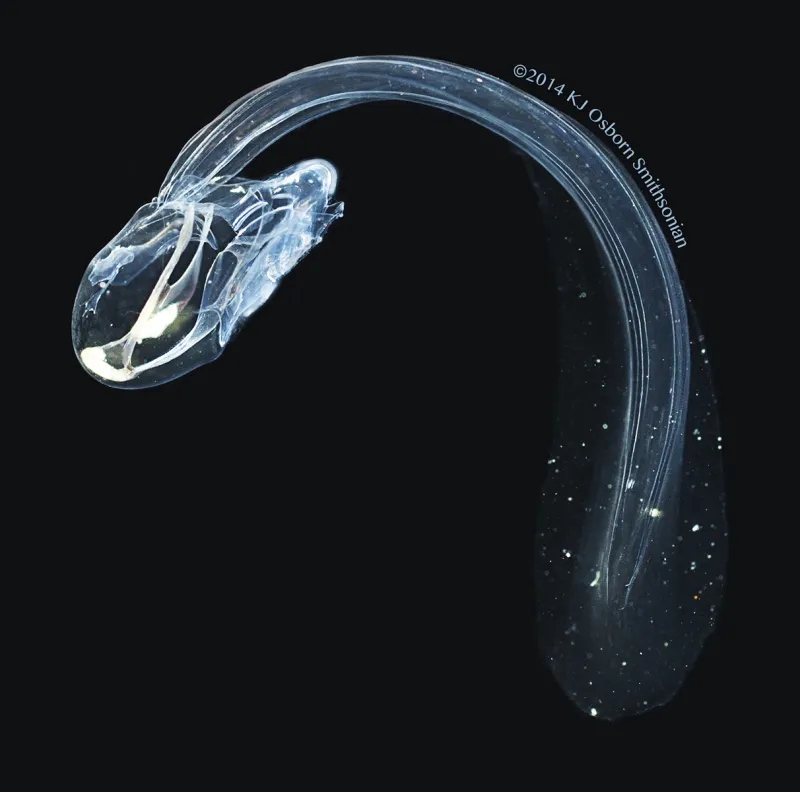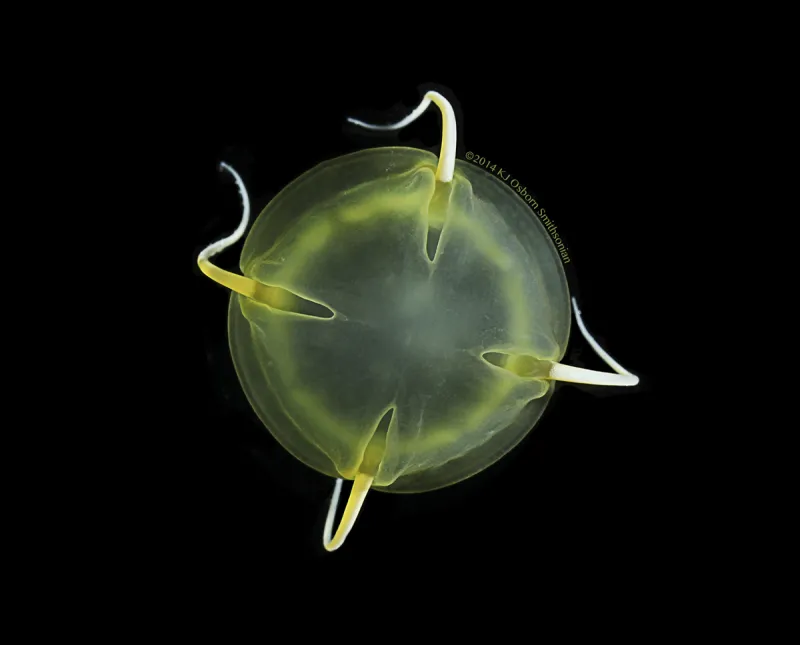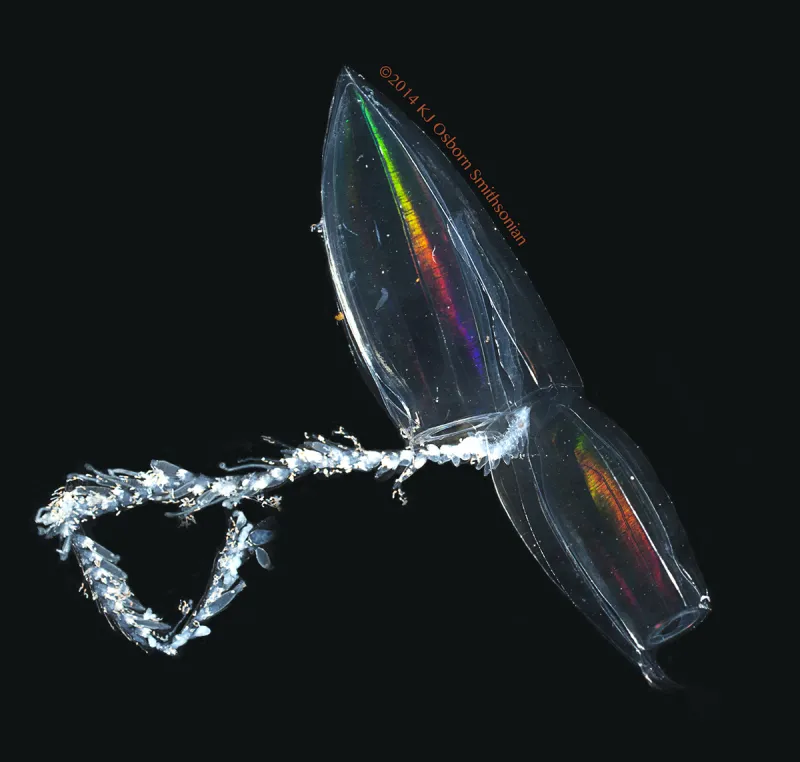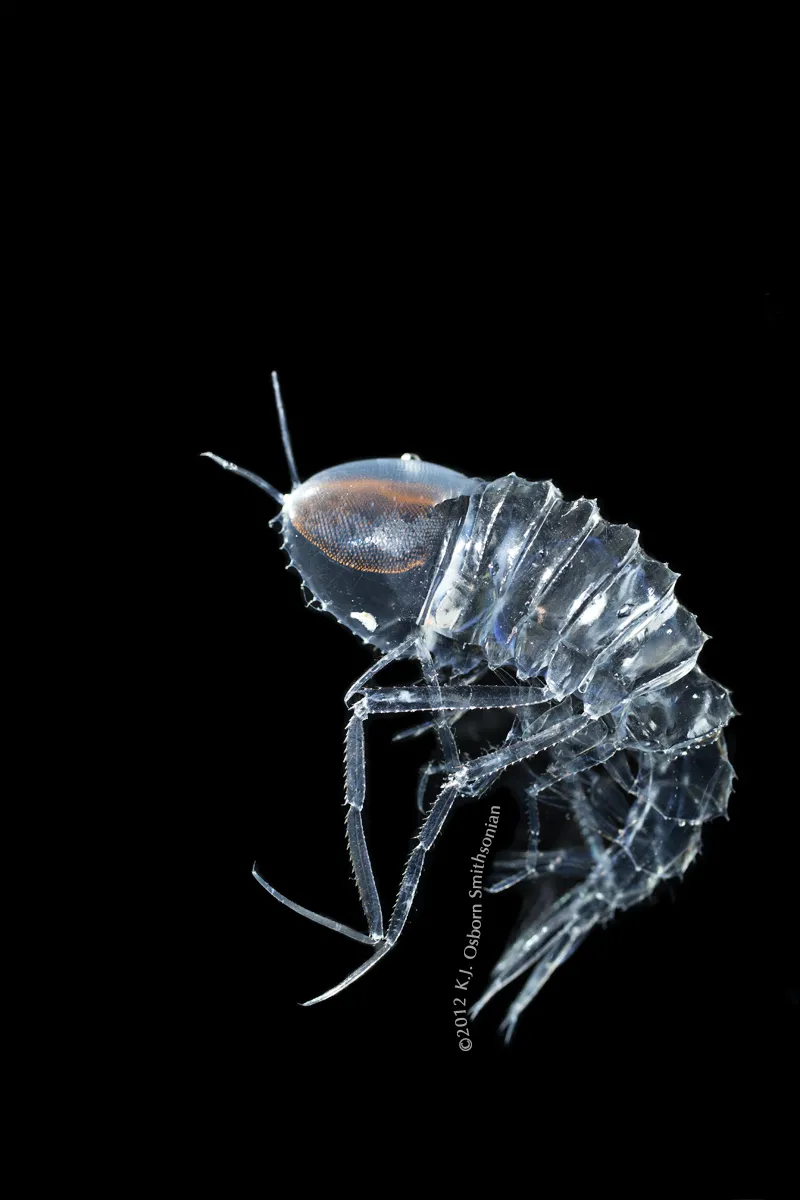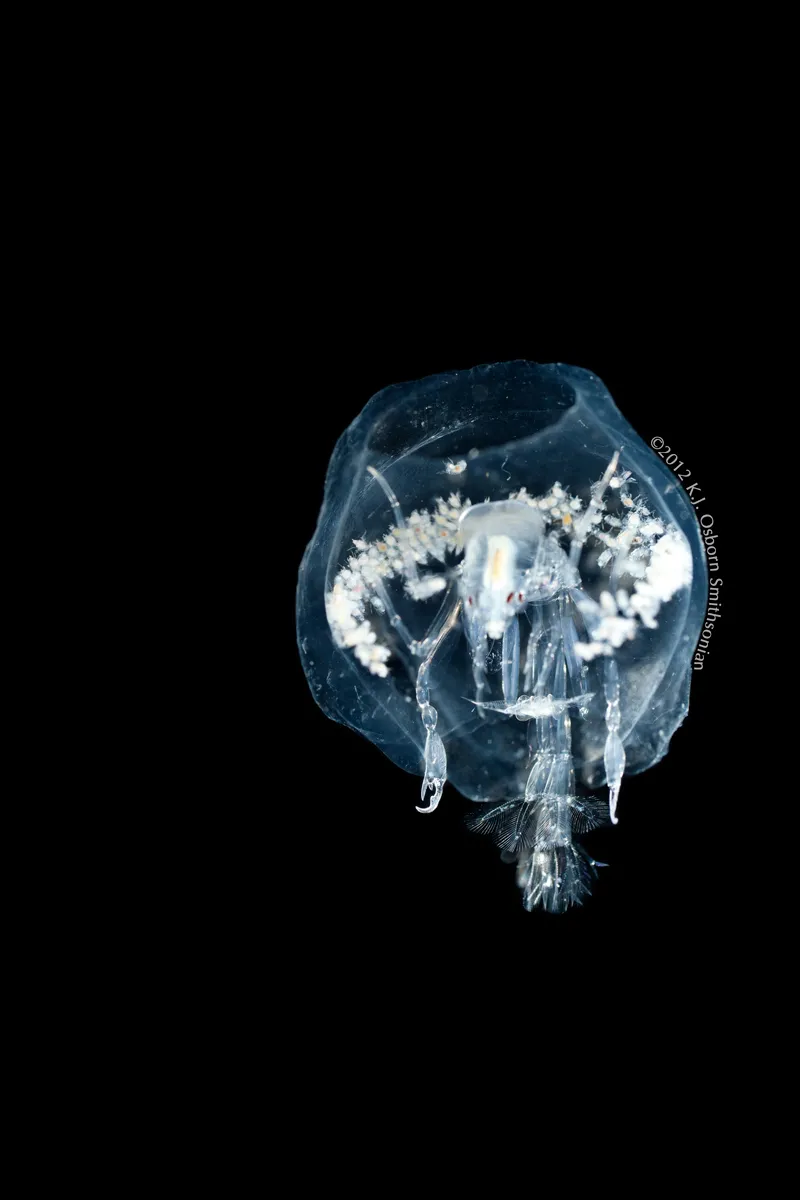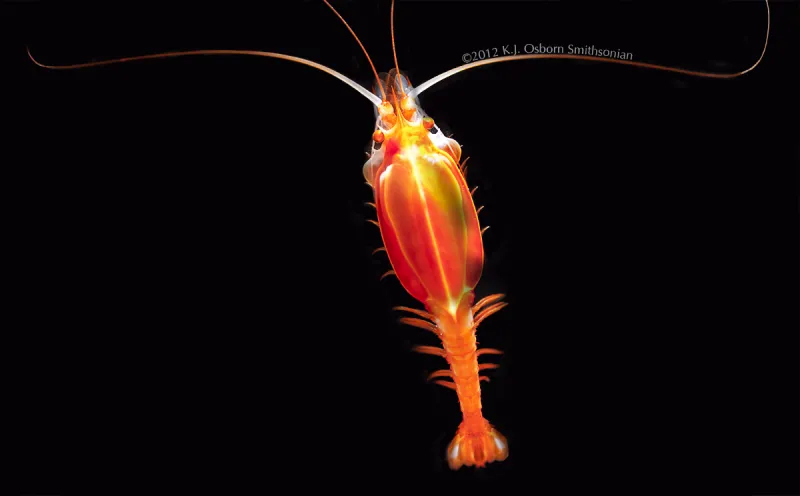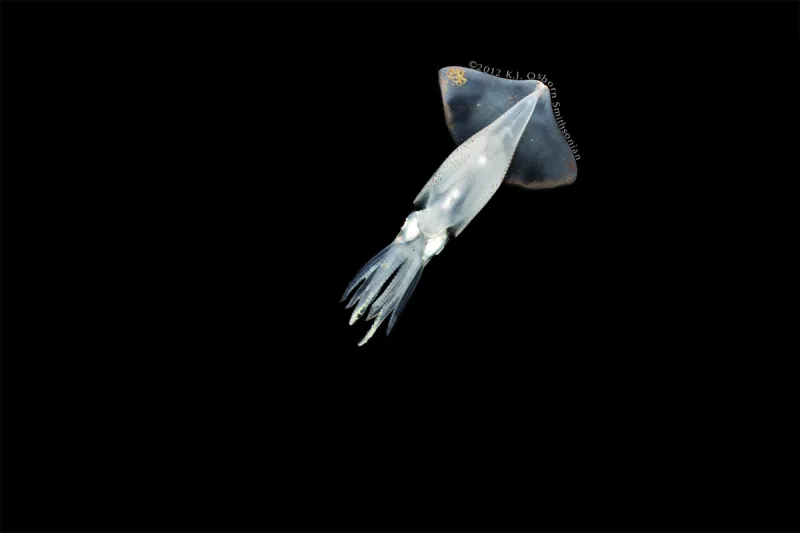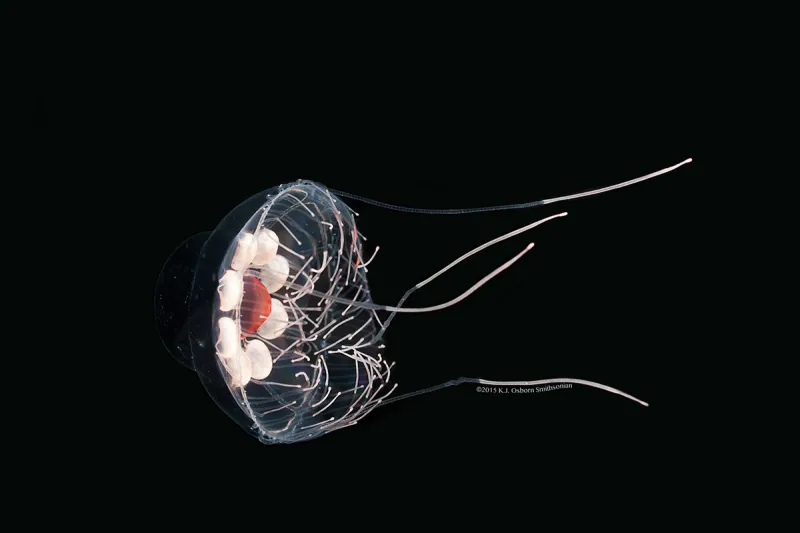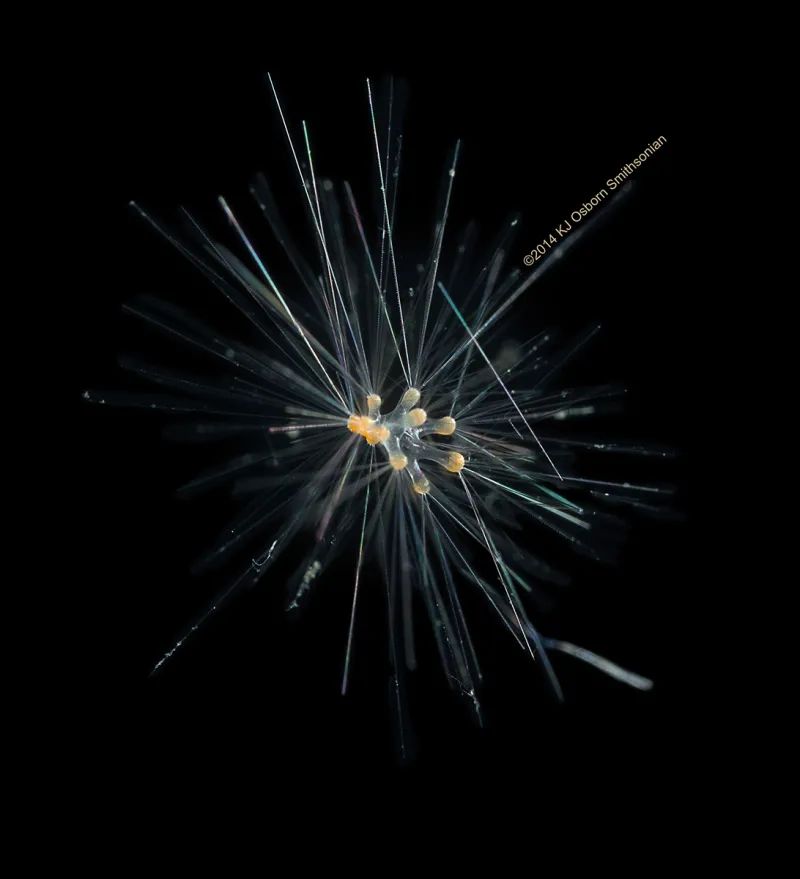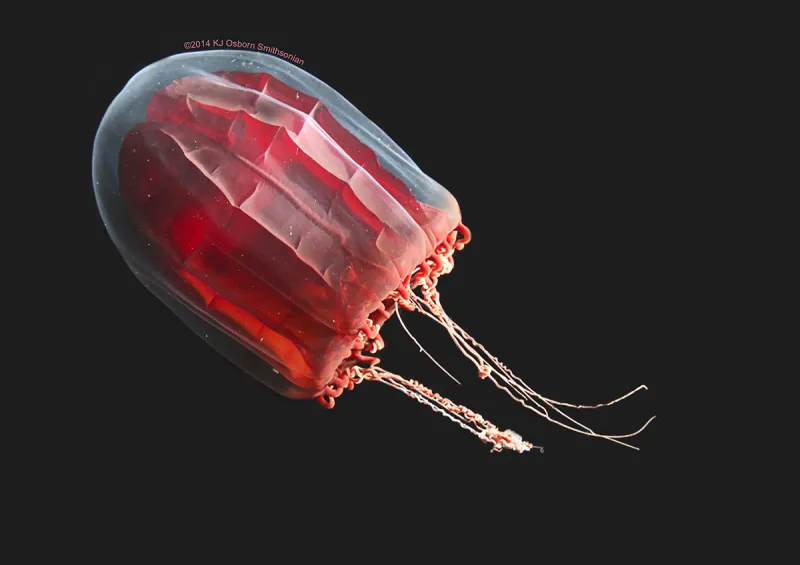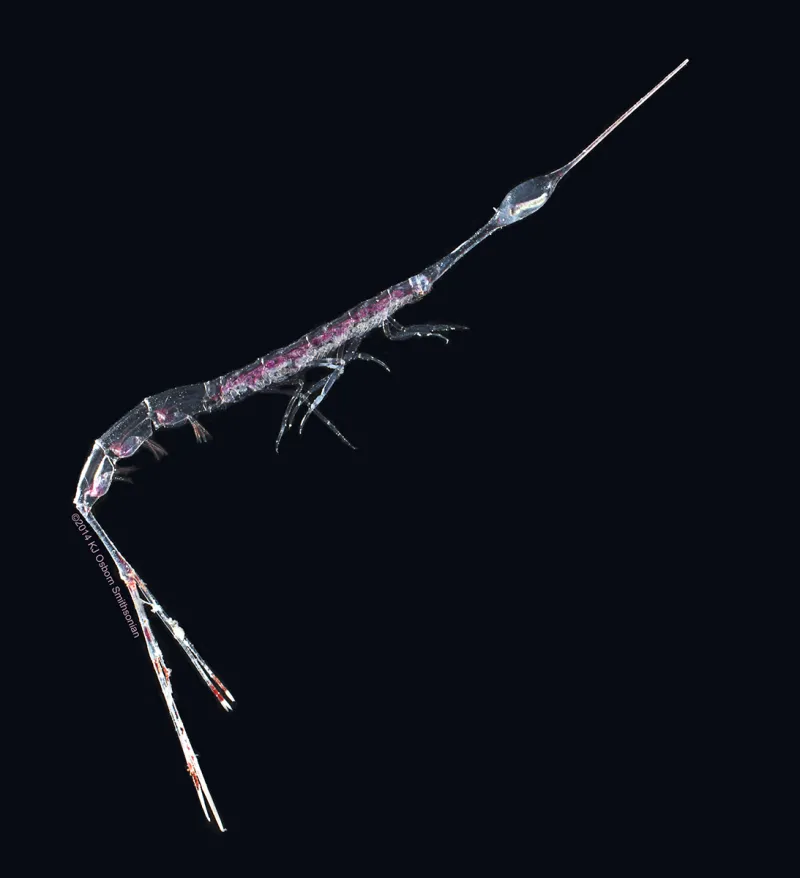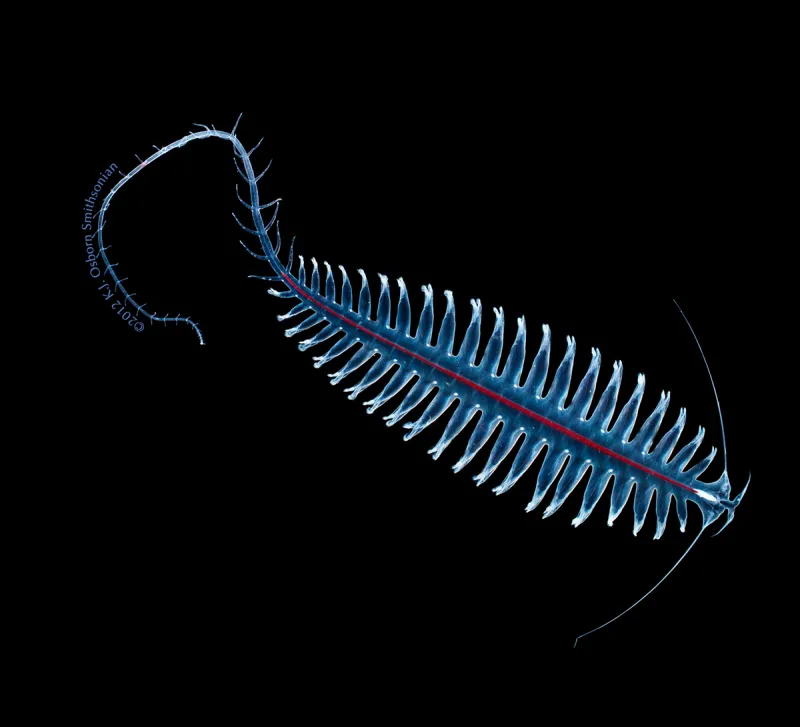Aegina are narcomedusae, a type of jellyfish. These small, pulsing animals are one of the most abundant jellies at 300 meters (980 feet). Not a lot is known about the many species of Aegina—researchers doing genetic work have found numerous species in the northeast Pacific alone that are yet to be named.
The Surprising Elegance of Midwater Sea Life
Imagine a hollow cube, measuring one foot on each side, suspended in the ocean at a depth roughly three football fields below the surface. From here, the seafloor is another 4,000 feet (or 1,200 meters) down. There is nothing to cling to or hide behind, only wide open space. The current flows very slowly, about 6 cm of water per second, which shakes out to about a mile and a quarter of seawater moving through the cube over a 24-hour period. At this depth, also called the Twilight Zone, light is scarce and everything looks dark to the human eye. What kinds of creatures would pass through the cube? What sea life can survive at this depth?
Karen Osborn, a curator and zoologist at the Smithsonian National Museum of Natural History, is investigating these questions through her collaborations with scientists at the Monterey Bay Aquarium Research Institute and the use of their remotely operated vehicles (ROVs). ROVs, underwater robots that are controlled from on board a ship, allow scientists to explore the deep, open water they refer to as the midwater. The midwater is the slice of ocean below the surface and above the seafloor. This vast habitat is filled with billions of animals, many unlike anything you’ve ever seen thriving in a place difficult to directly compare to other habitats.
To help make this comparison, Osborn teamed up with photographer and artist David Liittschwager, to examine what would pass through a one cubic foot frame—called a “biocube.” These “biocubes” give naturalists a standard way to compare the numbers and kinds of animals found in the midwater to those in other habitats. The biocube was suspended 300 meters (980 feet) below the ocean surface over the course of an April day off the coast of Central California. The team came prepared with 25 years’ worth of transect data at this location to determine what kind and how many animals they would see over 24 hours. They used the ROV’s high definition camera to watch the traffic of life commuting through the cube. If an animal was small enough, the team collected it with the ROV, brought to the surface and photographed it on board the ship. Several animals observed in the biocube were photographed with the ROV because of their large size and extremely delicate gelatinous bodies.
As in all habitats, most animals in the midwater are tiny—microscopic crustaceans like copepods and amphipods, worms, sea butterflies, and a myriad of other unusual species. Animals found in the midwater have evolved unearthly features and adaptations key to their survival in the harsh habitat.
Click through the gallery below to see 15 of Osborn’s favorite images—beautiful and strange animals that call the midwater their home.
Editor’s Note: With the help of Smithsonian scientists, photographer David Liittschwager is documenting what biodiversity can be photographed inside one cubic foot in a variety of habitats like coral reefs and the open ocean. Photography collaborator and midwater expert Karen Osborn provided an exclusive look at sea life living 300 meters below the surface of the ocean off the coast of Central California. You can learn more about biocubes in person at the exhibit “Life In One Cubic Foot” inside the Sant Ocean Hall at the National Museum of Natural History in Washington, D.C.


